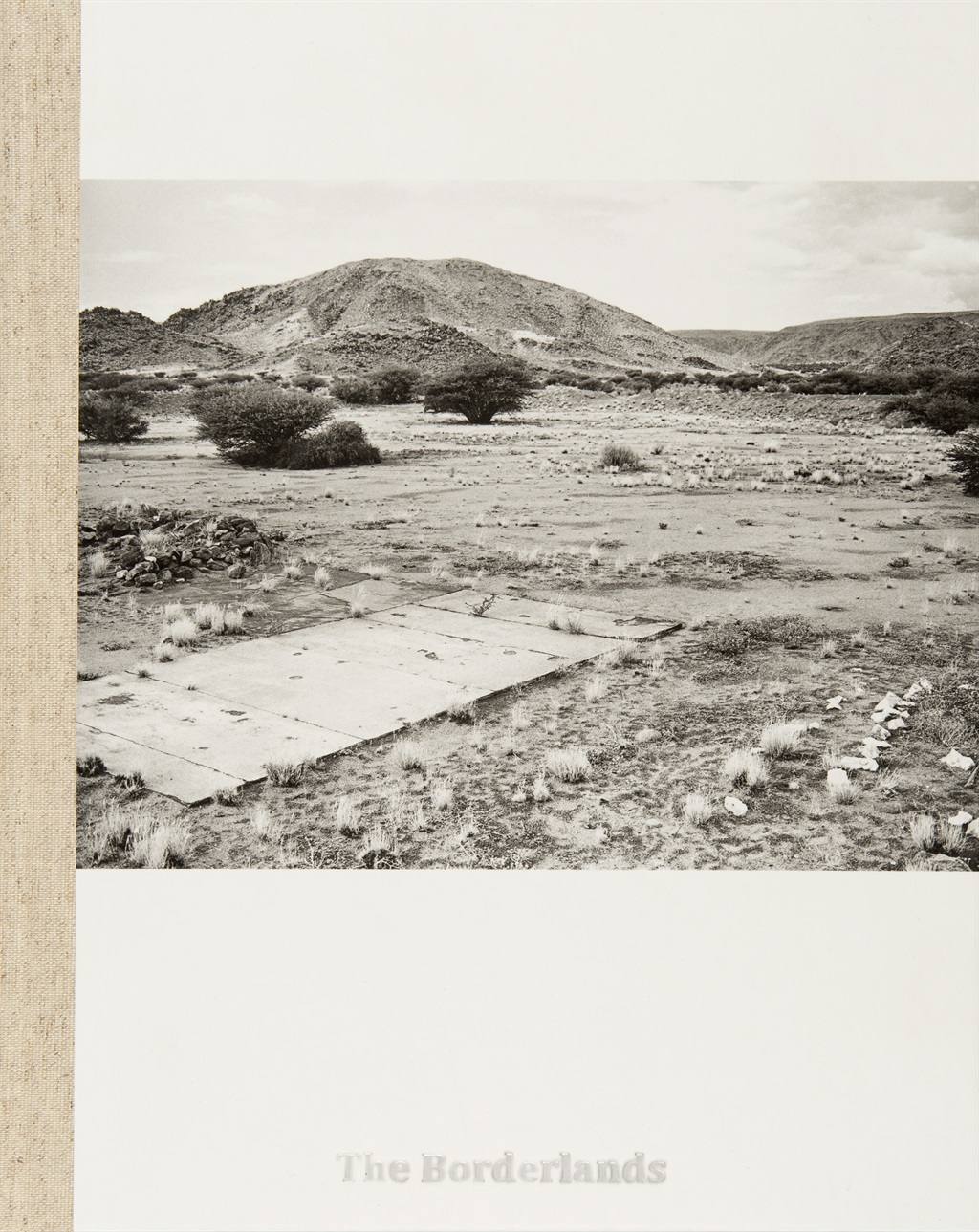
What is left behind years after conflict has ended? What does it mean for “land to be occupied, abandoned, and struggled over”?
That’s what photographer Jo Ractliffe has spent the past decade exploring in her desolate black-and-white landscapes, sometimes with people in them.
She traced the aftermath of the Angolan civil war before turning to the South African Border War with Angola. It’s this that is the subject of her newest book, The Borderlands, published for the global exhibitions of her series.
She finds obvious traces of war – helmets, abandoned buildings used for operations and the like. But what she really interrogates is themes of dispossession, belonging, memory and erasure; of people displaced from their land and the clash between indigenous traditions and apartheid/colonial forces.
The Borderlands documents the current conditions of several towns on the border that were used as service locations during the war. Although indigenous people occupy the land today, they do not own it. They live and gather in the spaces that once were used for planned conflict. The present merges with the past.
“It was as if everything had collided, or that there was no time,” writes Ractliffe. “South Africa is different because we think we know where we are.”
The enduring sense of displacement and detachment prevails throughout The Borderlands. One photograph shows a wide landscape in Schmidtsdrift, with a large concrete building with a tin roof on the left and small grass-covered indigenous huts on the right. The juxtaposing of these two structures speaks volumes.
The huts came after the buildings, but they were also there before them. Locals – some of them war veterans – are pictured near the buildings wearing modern, military and traditional clothes...
“I don’t know whether there is a manifest before and after,” writes Ractliffe. “I’m not sure landscape registers time that way. Befores and afters are happening simultaneously.”
This is also represented in a powerful two-part photograph of a battalion commemoration service that was a memorial in Platfontein to honour those who died in the war. While white veterans come for the special occasion, which began as a solemn and emotional ceremony, Ractliffe writes, this was “the first time they reconnected with the black veterans in 20 years”.
In the second photo, indigenous people began a traditional dance as the audience of men dressed in Western clothing pulled out their smartphones and cameras.
It is up to the reader to connect the clashes that occur on so many levels in these photos.
I do feel Ractliffe could have helped us a bit more though. The lack of a map or captions damages the opportunity for readers to accurately contextualise the scenes.
Few photos feature people and only a handful are portraits. Her focus on space and landscape is understandable, yet people, culture and society have a huge role in how history
plays out.
While Ractliffe makes it clear that the community is “under no illusion that [she] will take on the advocacy of the group”, she also emphasises their refusal to leave Schmidtsdrift as a form of resistance to the pressures of relocation.
Even though The Borderlands is site specific, it reflects a universal reality. It is both humbling and empowering to know that the land you identify with belongs to you.
But this is a privilege most indigenous people around the world are denied.
Ractliffe’s spotlight on the borderlands recognises the history of displacement that originated under colonialism and apartheid, yet continues to unfold today.




 Publications
Publications
 Partners
Partners








